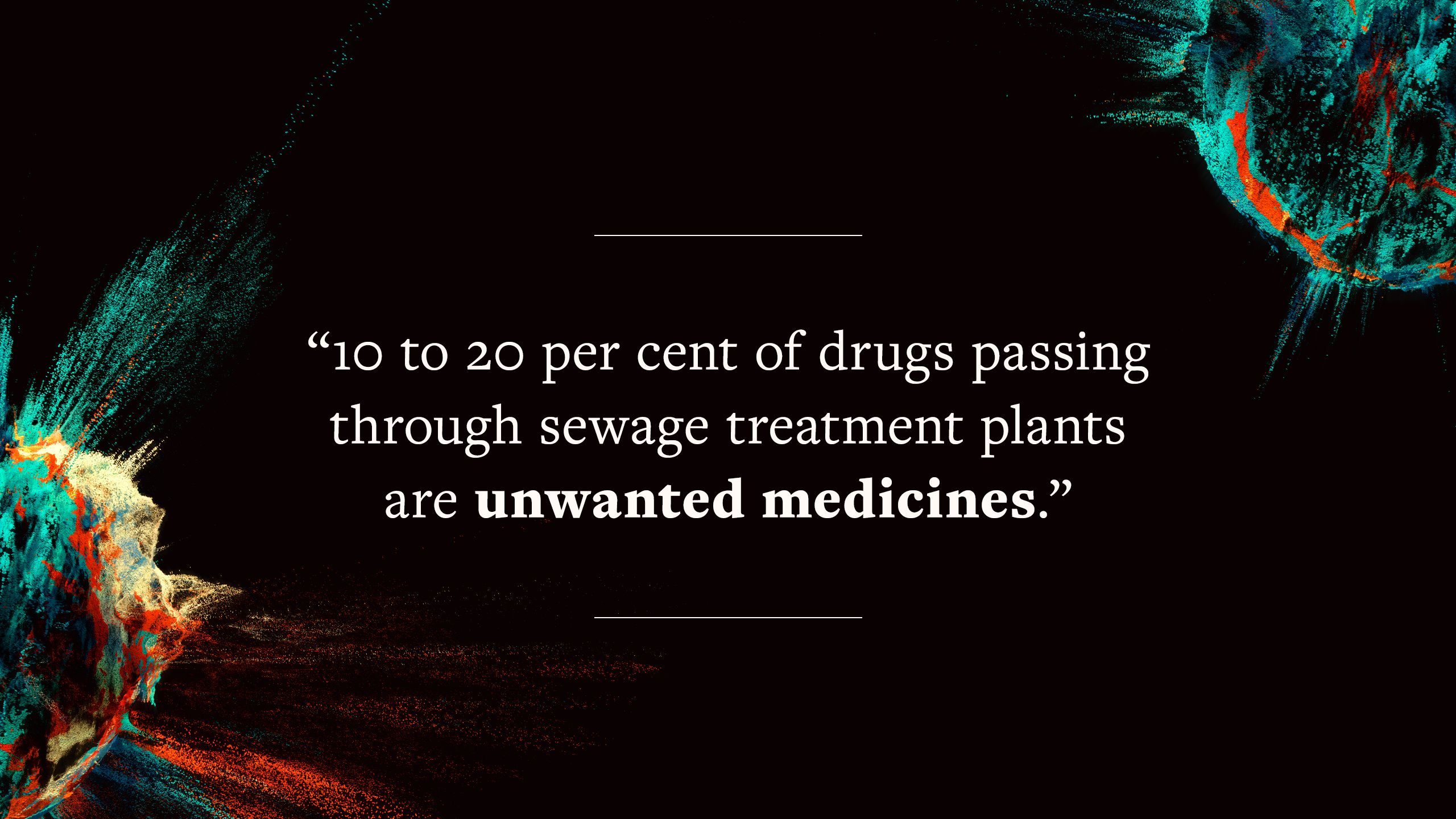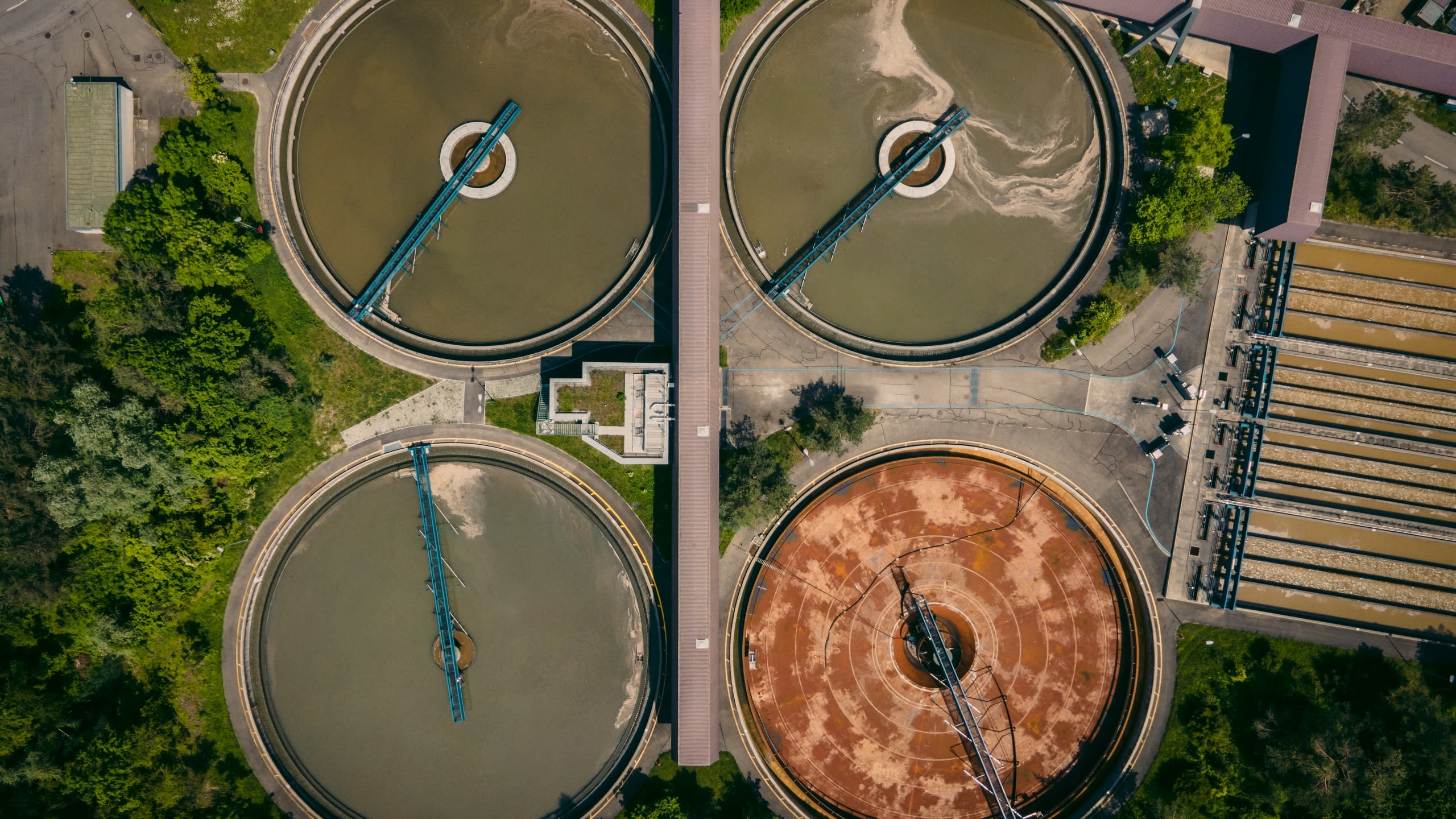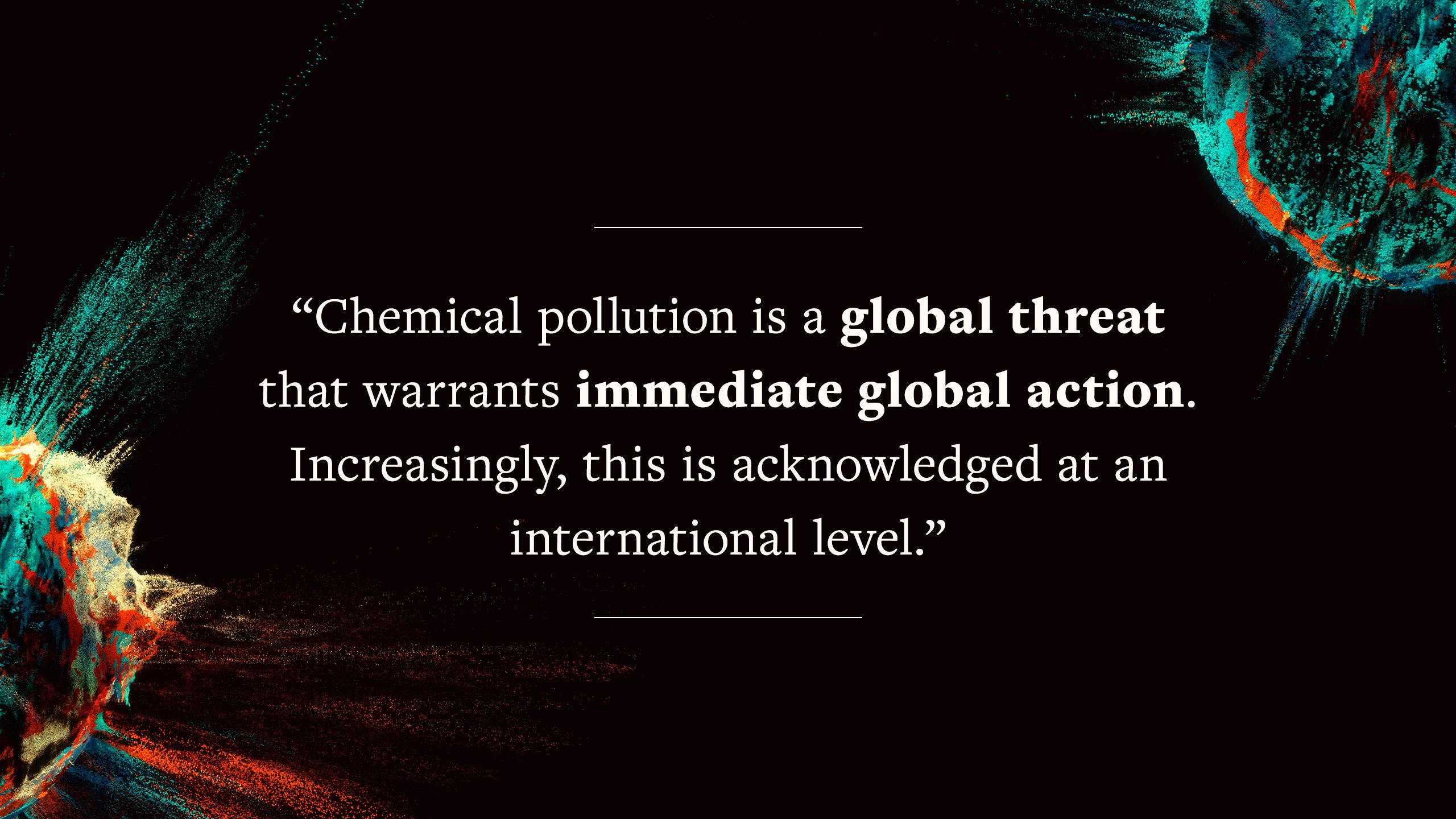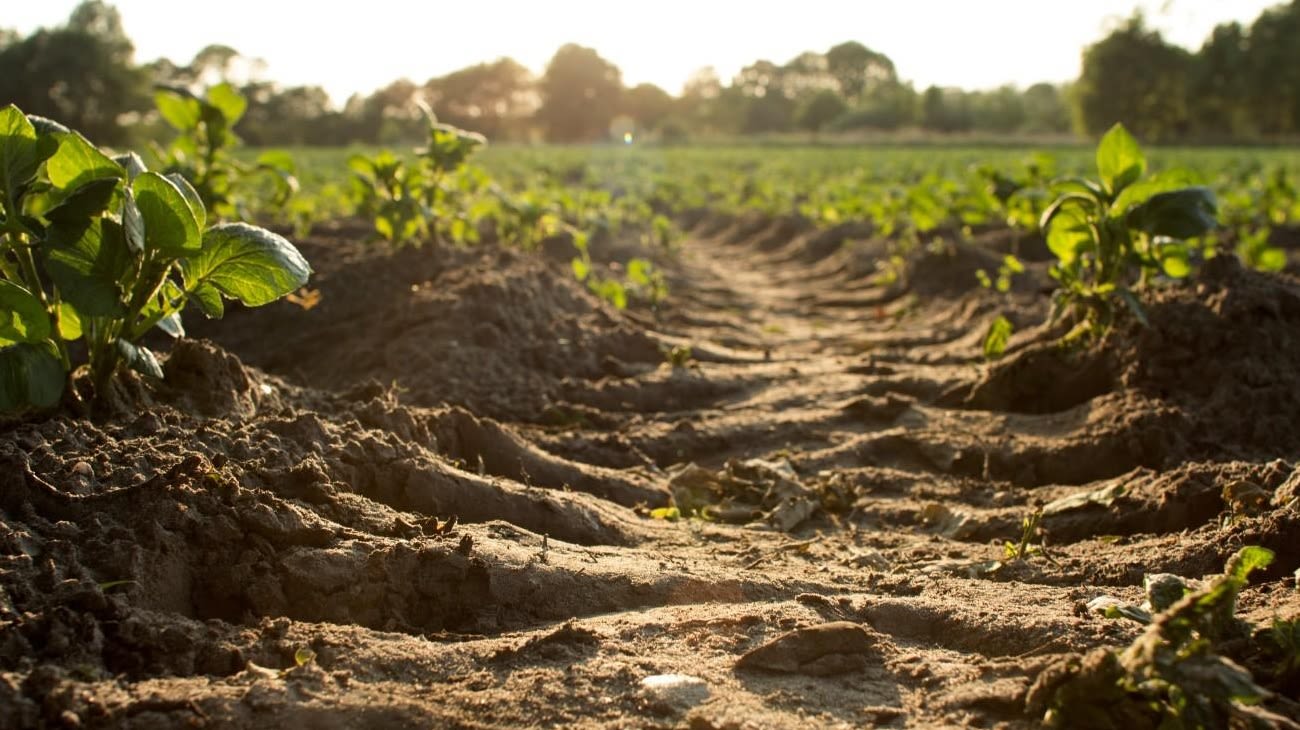Chemical pollution knows no borders
Global problems need global solutions

From medicine to agriculture, chemicals bring us important benefits. But wastage during manufacture and use can inadvertently have a serious impact on our health and on the environment. It’s a global concern.
Laura Carter’s research has found hazardous traces of chemicals in plants, soil and water from Yorkshire to remote rivers in Nepal. Now she’s creating an international network of academics, industry and regulators to pool knowledge and draw up frameworks so we can better manage such pollution crises across the world.
In the 1980s, the Oriental white-backed vulture was one of the most common large birds of prey in the world. Then, between 1993 and 2002, their population in Asia plummeted – by a staggering 99.7 per cent.
In 2020, the first signs of the same pattern emerged in European vulture populations. Of 16 vulture species, eleven are now at risk of extinction. But this impending ecological disaster has had very little public attention.
When we think about global pollution crises, what usually spring to mind are oil spills, smog gathering over a city, or plastics washing up on beaches. Widespread media coverage circulates these environmental disasters around the globe. The visible nature of such pollution makes it an easy story to tell.
The Deepwater Horizon oil spill in 2010, for example, caused extensive damage to the marine environment. News outlets were full of images of oil washed up on beaches across Louisiana and dead marine mammals in oiled waters. Deepwater remains high on the news agenda today. Ten years on, National Geographic discussed its long-term impacts on bottlenose dolphins.
But the collapse of vulture populations across Pakistan and Nepal in the early 2000s hardly made it to mainstream media. The vultures had, it turned out, been poisoned by diclofenac, a widely used painkiller.

The global chemicals market is growing. In particular, there’s an increased need for medicines now we are living longer. Today’s Europeans can expect to live up to 30 years more than they did a century ago. The treatment of many diseases, in humans and animals, relies on effective medicines.
But the pollution caused by some medicines is now itself emerging as a problem, with risks to the environment and to human health. Uncontrolled discharges from manufacturing sites have devastating impacts on water systems, for example – and on the people and animals who come into contact with them. Exposed bacteria develop increasing resistance to the treatments we have against them.
As scientists, we’re in a position to change this. One of my research projects at the University of Leeds is assessing the chemical compounds released into the environment at several antibiotic manufacturing sites in India.
By sampling environments in which waste is released, we’ll be able to compare these sites to ‘pristine’ environments unaffected by contamination. By working with microbiologists this will allow us to determine exactly what effect the waste has on the microbial ecosystem. We also want to explore questions such as: ‘Does this kill all beneficial bacteria, leaving only harmful bacteria alive?’
More than that, we have a unique opportunity to use the latest scientific developments generated in our project to strengthen environmental policy.
At the end of the project, we’ll be able to develop research-informed guidelines on safe discharge levels of chemicals from manufacturing plants.
I first became aware of these ‘invisible’ pollutants as an undergraduate during a research project. Back then, I discovered that we knew very little about how these chemicals behave in the environment and the risks they present.
But the last 10 to 15 years have seen a surge in research activity. I’m excited to be part of this drive to advance our understanding. In establishing my own research group, I’m passionate that our research should not only make important advances for the scientific community, but also generate outputs that can ultimately reduce the risk of this inadvertent exposure.
As such, my research into chemical contamination in India will contribute to an international network of academics, industry and regulators, helping to shape the research direction and make the most of its findings.
At the end of the project, we’ll be able to develop research-informed guidelines on safe discharge levels of chemicals from manufacturing plants. Leeds is focused on being a truly global university with international reach, and research is key to achieving all this.
While India is the case study for this work, the thresholds we are able to define will be relevant to other countries where antibiotics are manufactured. We’ll also be able to identify which chemicals require close monitoring going forwards.
What happened to the vultures?

The vultures had been eating carcasses of cattle that contained residues of the drug, diclofenac. We now understand that diclofenac is toxic to vultures, even in small doses. Their exposure to this drug decimated the vulture populations.
Diclofenac is used to treat pain and inflammatory diseases in both livestock and humans. You can buy products containing diclofenac over the counter in your local pharmacist. Diclofenac belongs to a group of chemicals collectively known as contaminants of emerging concern. These encompass a broad range of man-made chemicals. They include medicines, personal care products, synthetic musks, and nanomaterials that are routinely released into our environment.
Emerging contaminants have been detected in rivers, lakes, soils and sediments across the globe. These chemicals are often invisible to the naked eye: we don’t know they are there. It’s essential that we understand what risks they present to human and ecosystem health.
Human and veterinary medicines are a particular concern. This is because medicines are biologically active, and they don’t lose potency as they pass through us or through animals. When you take a drug, your body uses only a small fraction of the medicine to get the desired therapeutic effect. You expel the remaining portion of the chemical, either unchanged or in a metabolised form, into the sewage system when you use the toilet.
Around 70 per cent of orally administered anti-anxiety medication (such as diazepam) is excreted in urine, for example.
Medicines get into our wastewater in other ways too. We tend not to be told how to dispose of unused medication – so flushing it down the toilet seems an easy option.
It’s estimated that 10 to 20 per cent of drugs passing through sewage treatment plants are unwanted medicines flushed directly down the drain. Increasing public awareness around correctly disposing of unwanted medication by returning it to the pharmacy would reduce the amount of medicines in our sewage system, and ultimately into our environment.
Treated wastewater in Hyderabad contained enough antibiotics to treat 44,000 people.
Sewage treatment plants aren’t designed to remove medicinal products. So residues of these chemicals remain in sewage treatment products released into the environment, namely sewage sludge (used as a fertiliser) and wastewater. Residues have become ubiquitous in the environment.
Here at Leeds, we’ve detected medicines in water catchments across Yorkshire to remote rivers in Nepal. Common medications, such as ibuprofen, have also been detected in the Arctic’s ocean food chain. At least one medicinal product has been reported in 71 countries worldwide.
Worryingly, monitoring campaigns are showing that concentrations of medicines in the environment can vary significantly depending on location. The highest concentrations are typically measured in the Global South, in the African continent and in countries such as India. These concentrations can be up to one hundred times higher than those measured in Europe and North America.
In part, this is because medicines can enter the environment at all stages in their life cycle.
Manufacturing plants are major contributors. Production waste is often released into nearby bodies of water, such as rivers and lakes, following little or no treatment. This leads to extremely high concentrations of medicines.
Poorly enforced legalisation exacerbates this in countries such as India and China. Testing of treated wastewater outside a manufacturing facility in in Hyderabad, India, revealed concentrations of the antibiotic ciprofloxacin strong enough to treat 44,000 people.
Global responsibilities require global action

Medicine contamination in the environment is a global issue. We need a concerted effort towards developing – and implementing – policies to tackle global pollution crises and protect our shared environment.
The NHS imports 80–90 per cent of the generic medicines it uses, according to a parliamentary report on Brexit and the pharmaceutical sector published in May 2018.
China and India are in the top five providers of UK medicines outside the EU. India is the global leader in generic drug production and manufactures 25 per cent of all medicines used in the UK.
But the US had the largest share of sales of new medicines, at 65.2 per cent, followed by Europe at 17.7 per cent.
Even though they are defined as high growth pharmaceutical markets, Asian countries – including China, India, Bangladesh and Indonesia – only accounted for 1.5 per cent of sales of new medicines during 2013–18. Global market share shows a similar trend.
In 2018, North America (USA and Canada) was the reigning largest market, with a 48.9 per cent share of pharmaceutical sales ahead of Europe and Japan. This trend shows no sign of slowing.
There’s a clear disparity here. The world’s largest drug manufacturers are in countries with the lowest consumption of medicines; yet these low-use countries are dealing with the pollution associated with drug production.
Medicine contamination in the environment is a global issue. We need a concerted effort towards developing – and implementing – policies to tackle global pollution crises and protect our shared environment.
Whatever the source, drug pollution carries specific dangers for both human health and ecosystems. These range from the feminisation of male fish to the accumulation of drug residues in food crops.
Alarmingly, the discharge of antibiotics into the environment is linked to the development of antimicrobial resistance (AMR).
Antimicrobial resistance occurs when microorganisms (for example, bacteria and viruses) change over time and no longer respond to antibiotic treatments. This makes infections harder to treat and increases the risk of severe illness. The UN Environment Programme recognises AMR as one of the biggest global public health concerns that we face .
The majority of the world’s antibiotics are manufactured in India. Antibiotics can be produced by chemical synthesis or by growing vast numbers of microorganisms which naturally produce them. Either method results in large quantities of waste. Potentially these contain active antibiotics which may be toxic to bacteria and other cell types.
The more we expose bacteria to antibiotics, the faster they become resistant to the drugs. Those drugs cannot then be used to treat infections. Antimicrobial resistance is an enormous potential concern, and seeking solutions is a priority for my project.
Can we turn waste into a resource?

Medicinal products also impact the agricultural sector. Climate change, population growth and rapid urbanisation are making freshwater resources scarcer.
By 2025, absolute water scarcity will be a daily reality for an estimated 1.8 billion people.
When fresh water is limited, farmers use local streams to irrigate crops, and these streams may contain large amounts of wastewater. In some countries, wastewater is used directly for irrigation. This mostly happens in arid and semi-arid countries, such as China: it’s been reported that over 1 million hectares in China are irrigated directly or indirectly with wastewater.
Wastewater irrigation can be very important to local people. And it provides additional benefits, such as introducing nutrients essential for crop growth. So wastewater is increasingly seen as a potential source of ‘new’ water for applications such as agricultural irrigation: it will sustainably secure the global food production needed to support our growing population.
The idea of moving towards a more sustainable agricultural system is gathering increasing support within our food production systems. Agricultural sustainability rests on the principle that we must meet the needs of the present without compromising the ability of future generations to meet their own agricultural needs.
The United Nations has 17 interlinked global goals designed to be a ‘blue print to achieve a better and more sustainable future for us all’: the United Nations 2030 Agenda for Sustainable Development.
Sustainable Development Goal 2 (SDG2), to ‘End hunger, achieve food security and improved nutrition’, promotes the sustainable agriculture approach.
Ensuring the availability and management of water and sanitation for the global population is aligned with SDG6.
Feeding a growing global population sustainably will likely increase the reuse of wastewater. While this brings many benefits, it also provides a route by which medicine can pass into soils and then enter the agro-ecosystem.
The circular economy is gaining ground as a potential solution.
Reducing our dependence on chemical-based fertilisers is also central to achieving agricultural sustainability. Fertilisers have significantly improved the quantity and quality of food available today.
However, phosphorus and potassium reserves – essential components in the chemical synthesis of fertilisers – are depleting at an alarming rate.
Supplies are expected to be exhausted within 100 years. But there is an alternative: organic-based fertilisers. Organic fertilisers include waste from pulp and paper mills, livestock manure and brewery sludge, as well as sewage sludge (although sewage sludge can also introduce medicinal products into our agricultural systems).
Producing agricultural commodities based on the reuse of materials and with minimal external inputs aligns to the concept of a ‘circular economy’, which aims to eliminate waste and continually use resources within a ‘closed-loop’ system. The circular economy has gained increasing prominence as a potential solution to meeting the world’s most pressing sustainable development challenges.
We need to act together – now

Regulatory frameworks do exist for the management of these kinds of chemical waste. However, regulations are largely specific to a country or political authority.
In addition, the science underpinning the development of such guidance is often conducted at a local scale, with most research activity centred in the Global North. This overlooks the fundamental principle: chemical pollution knows no borders.
Food grown in a wastewater-irrigated field in Mexico, for example, is transported across the globe for consumption. Rivers cross country borders and carry pollution into neighbouring countries.
Furthermore, findings about the accumulation of medicines in crops in one country may be relevant to other countries, but existing science policy on chemicals in the environment is fragmented at best. This has only exacerbated the widespread health and environmental issues we all face.

At the 5th UN Environment Programme Assembly meeting in 2021, governments around the world prioritised chemical pollution – alongside climate change and biodiversity – for the Programme’s work in 2022–25. The associated report, Making Peace with Nature, calls for multi-sectoral and multi-stakeholder cooperation to ensure the link between science, policy and decision-making remains stronger than ever, so as to advance the sound management of chemical waste.
At the same time, a group of scientists from the International Panel on Chemical Pollution (IPCP) called for the creation of a global science policy body focused on addressing chemicals and waste.
Scientists and policy makers share a common goal – to protect the environment. But as academics we sometimes fail to think about the bigger picture and how to translate our work into relevant global policies.
This may be due to understandable pressures: a limited capacity to work beyond immediate academic commitments, top down pressure to publish work in highly impactful academic journals, and the need to see immediate impacts of our work.
The University of Leeds’ ambition to move towards a collaborative way of working – where research has a global impact and makes a social difference – pushes away these constraints.
Complex scientific terminology can also hamper communication between scientists and policy makers, and research outputs are often inaccessible to a broad non-specialist audience. Again, Leeds’ strategy of working in partnership with different sectors should help overcome this.
The IPCP report highlights how we need to bring together all relevant sectors and stakeholders and foster collaborative, ambitious action. Comprehensive chemical and waste management relates to almost all of the Sustainable Development Goals (SDGs), not just those on sustainable agriculture, for example, SDG3 on Health, SDG6 on Clean Water and Sanitation, SDG11 on Sustainable Cities, and SDG12 on Sustainable Consumption and Production.
There is an opportunity to change all this with the development of a global platform for the sound management of chemicals and waste beyond 2020. The crossover with other international policy agendas, such as the Sustainable Development Goals, could bring these agendas together to deliver meaningful actions. A new science-policy body has the potential to provide a scientific, research informed basis for international and national action on chemicals in the environment by conducting authoritative scientific assessments, identifying emerging concerns and connecting policy makers with scientists.
COVID-19 has brought home that we live in an interconnected world.
Solutions are in reach

Research holds the key to understanding the risks these chemicals pose in the environment. I’m excited to be part of the scientific community generating this important knowledge. We’ve demonstrated that medicines present in soils can be taken up by plants and accumulate in roots, leaves, and fruits. Our recent work has even been able to detect medicinal residues in the nectar and pollen of flowers.
I’m now leading a programme to build on these findings and explore the risk of emerging contaminants in agricultural systems. A combination of laboratory experiments and field scale experiments at the University of Leeds farm will explore the impact of medicines associated with sewage sludges and wastewater on soil functioning.
The project will bridge knowledge gaps surrounding fate of medicines in soil-crop systems, impacts on soil and plant toxicity, and consider the risks on ecosystem and human health by uniting scientific expertise from across disciplines. Building on this work, the scientific platform will investigate the impact of a wider range of emerging contaminants in agricultural systems, ensuring the longevity of this work.
Outputs from my project have the potential to feed into policy frameworks by developing thresholds on safe levels of medicines for wastewater and sewage sludge use that are fully informed by research.
A stakeholder advisory group, involving environmental regulators and key industrial partners, is supporting the project: feeding back on planned experiments, assisting with interpretation of results and guiding dissemination of project outcomes. Working together with key stakeholders throughout the duration of the project offers the potential to make the most of this research, ensuring that it is timely and aligned to current policy direction.
With this understanding, we can develop solutions and options to minimise the impact of these chemicals, such as improved wastewater treatment or bioremediation. Innovations in green and sustainable chemistry offer promise in reducing the environmental burden of medicinal pollution. Consumer demand is also driving the development of safer products and production.
In the meantime, we need to ensure that, when chemicals are released into the environment, they are done so at safe levels. We therefore need to make research available and accessible, drawing on cross-disciplinary expertise from agriculture to policy to help guide the development of regulations.
Such cross-sector collaboration is essential if we are to make meaningful scientific advances to tackle issues that affect us all. It’s something that Leeds University explicitly seeks to foster in its new ten-year strategy. This aims to place the University at the heart of a global community combining research and innovation, education and knowledge exchange.
The COVID-19 crisis has brought home to us all that we live in an interconnected world: disease, chemicals and drug resistance can spread rapidly. It is imperative that we have policies in place to regulate environmental exposure of medicines, but these policies cannot be constrained by borders to define countries or political administrations created years ago.
Pollution doesn’t recognise lines on a map.
